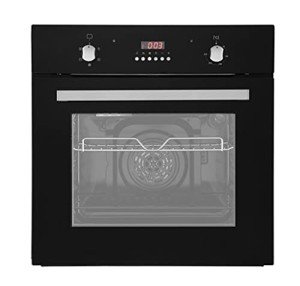The Rise of Built-In Ovens: A Seamless Approach to Modern Cooking
In modern kitchens, where style aesthetics blend seamlessly with functionality, one device stands out as a real game changer: the built-in oven. As homeowners and chefs alike continue to seek ingenious options that improve their cooking experience, built-in ovens have ended up being significantly popular. This article explores the benefits, considerations, and trends surrounding built-in ovens, highlighting why they are a necessary feature in modern-day cooking areas.
What is a Built-In Oven?
A built-in oven is a cooking area device designed to be integrated into the cabinetry of a kitchen instead of standing alone. Unlike standard freestanding ovens, which can be moved and positioned anywhere, built-in ovens come in numerous designs and sizes to fit specifically within designated spaces. Readily available in single or double configurations, these ovens use a structured appearance that matches modern kitchen area designs.
Benefits of Built-In Ovens
1. Space-Saving Design
Among the most attractive advantages of built-in ovens is their space-saving design. By integrating the oven into cabinets, you can free up valuable counter and flooring area. This is especially beneficial in smaller sized cooking areas, where taking full advantage of room is important. Built-in ovens can be set up at eye level, making them more available and lowering the need to bend down.
2. Visual Appeal
Built-in ovens contribute to a smooth and cohesive kitchen style. Offered in various surfaces-- such as stainless-steel, black, white, and custom-made kitchen cabinetry-- they can blend effortlessly into the total decor. This aesthetic appeal improves the kitchen area's visual consistency and elevates the area, developing a modern and sophisticated atmosphere.
3. Improved Functionality
Many built-in ovens come equipped with advanced cooking innovations, such as convection cooking, steam ovens, and wise features. These improvements permit flexible cooking options, making it much easier to attain professional-level outcomes in the house. Smart built-in ovens can even link to Wi-Fi, enabling users to manage the oven from another location, receive notifications, and gain access to a range of cooking programs and dishes.
4. Improved Ventilation
Because built-in ovens can be integrated with kitchen area hoods and ventilation systems, they can help keep better air quality and minimize cooking odors. This is particularly considerable for those who love to cook with aromatic spices and active ingredients, as an effective ventilation system can keep the cooking area comfortable and inviting.
5. Modification Options
Built-in ovens use a large range of personalization options to suit private cooking designs and needs. From professional-grade devices with several cooking modes to compact styles for smaller sized cooking areas, house owners can choose the oven that fits their specific requirements. Many makers also offer adjustable front panels, allowing you to match the oven's appearance to your cabinets for a really merged appearance.
Factors to consider When Choosing a Built-In Oven
While built-in ovens have numerous advantages, there are very important considerations to remember before making a purchase:
1. Rate
Built-in ovens typically come with a greater cost tag than their freestanding equivalents due to their style and installation requirements. It's important to consider both the expense of the oven and any additional expenses associated with cabinets adjustments or installation.
2. Setup Requirements
Setting up a built-in oven typically requires professional assistance, particularly if you need to modify existing cabinetry. Ensure that you think about any costs related to installation, including labor and prospective cabinetry modifications.
3. Size and Dimensions
Before buying a built-in oven, determine the designated area properly to ensure a correct fit. Ovens & Hobs -in ovens come in different sizes and configurations, so picking one that aligns with your requirements and cooking area design is crucial.
4. Lifestyle and Usage

Consider your cooking practices and requires when choosing a built-in oven. If you often host large events, a double oven might be more useful. On the other hand, if you have a compact kitchen area, a single-wall oven may be sufficient.
Trends in Built-In Ovens
The kitchen home appliance market is continually developing, and built-in ovens are not exempt from emerging trends. Some existing patterns include:
Smart Technology Integration: With the increase of smart home technology, built-in ovens now often feature connection options. This allows users to monitor cooking progress and adjust settings by means of mobile apps.
Energy Efficiency: As sustainability ends up being a concern, many manufacturers are buying energy-efficient built-in ovens that lower energy intake while keeping efficiency.
Multi-functional Designs: Built-in ovens now offer functions such as air frying, sluggish cooking, and steaming, offering versatility that meets a vast array of cooking techniques.
Conclusion
Built-in ovens unquestionably represent a perfect mix of design, function, and convenience in today's cooking areas. As more property owners go with this modern solution, the focus moves to creating a cooking space that is as visually pleasing as it is practical. Whether you are constructing a brand-new home or redesigning your kitchen, considering a built-in oven might elevate your cooking experience and transform your cooking area into an elegant and functional sanctuary. With an array of options readily available and ongoing developments in innovation, built-in ovens remain a standout choice for both newbie cooks and cooking lovers alike.
